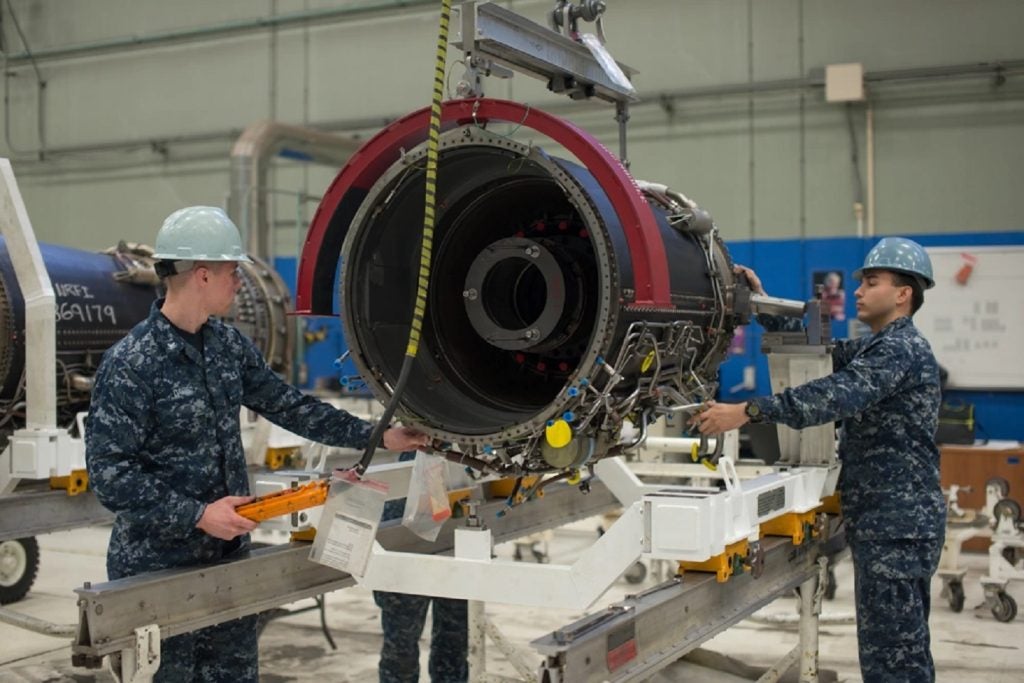India’s defence industrial base continues to swell as General Electric Aerospace (GEA), an American aerospace prime, agreed to a memorandum of understanding (MoU) on 22 June with the Bangalore-based company, Hindustan Aeronautics Limited (HAL).
The agreement will see the GEA co-produce its F414 jet engines in India to power HAL’s Tejas Mk2 fighter jets for the Indian Air Force – a light combat aircraft currently in production.
The Tejas fighter jet was originally manufactured by HAL, with its Mk1 variant entering the Indian Air Force for the first time in July 2016. GlobalData intelligence indicates that in November 2008, India’s Air Force confirmed a requirement for 140 Tejas aircraft for seven squadrons.
The Tejas Mk2 is currently in development; Airforce Technology reported in 2020 that the aircraft’s maiden test flight was scheduled for last year. Recently, The Hindustan Times claims that the roll out for the Mk2 variant will not begin until 2024.
Moreover, GEA is the original equipment manufacturer of the F414 engine, which the US Navy has used for its F-18 Super Hornet jets for over 30 years. GEA tells us that more than 1,600 engines have been delivered.
Indus-X programme
The US Department of Defense and the Indian Ministry of Defence launched the India-US Defence Acceleration Ecosystem (Indus-X) today at a catalyst event hosted by the US-India Business Council on 21 June; launched against the backdrop of Indian Prime Minister Narendra Modi’s state visit to the White House.
Indus-X will expand the technological partnership and defence industrial co-operation between the two governments, their businesses and academic institutions. It builds on a commitment by the US and Indian national security advisors in January 2023 to launch an “innovation bridge” to connect US and Indian defence start-ups as part of the US-India initiative on Critical and Emerging Technology (iCET).
The MoU between GEA and HAL comes straight off the heels of the programme announcement yesterday. While this deal bolsters the Indian Air Force with proven engine power and and wide Indus-X intitative provides critical technology sharing to a swelling Indian defence industrial base, what does this integration offer the US?
America wants India’s loyalty
America’s interest lies more in the geopolitical realm as the country aims to bring India into the fold alongside the west.
GlobalData land domain analyst, Tristan Sauer, notes: “As US policymakers become increasingly concerned with the prospect of a 'multi-polar world order', maintaining positive relations with key economic powers such as India are a strategic imperative.
“India being part of the BRICS organisation and with historic reliance on the Russian defence industry makes it more 'vulnerable' to being swayed from remaining aligned with US interests, thus boosting bilateral ties is critical to US foreign policy and national security to a broader extent.”
India remains outside the Nato fold and open to trade with Russia. GlobalData tells us that there are various Russian platforms in the Indian Armed Forces: including outdated 68 MiG-29UPG units and 93 MiG-21 units in the Air Force.
“India has recently faced issues with deliveries of Russian defence materiel after the Russian defence industry illustrated it was incapable of simultaneously meeting export requests and resupplying Russian forces fighting in Ukraine. Consequently, it makes sense that the US government would seek to foster increased collaboration between US and Indian defence firms to reduce the latter's dependency on Russian industry,” Sauer continued.











